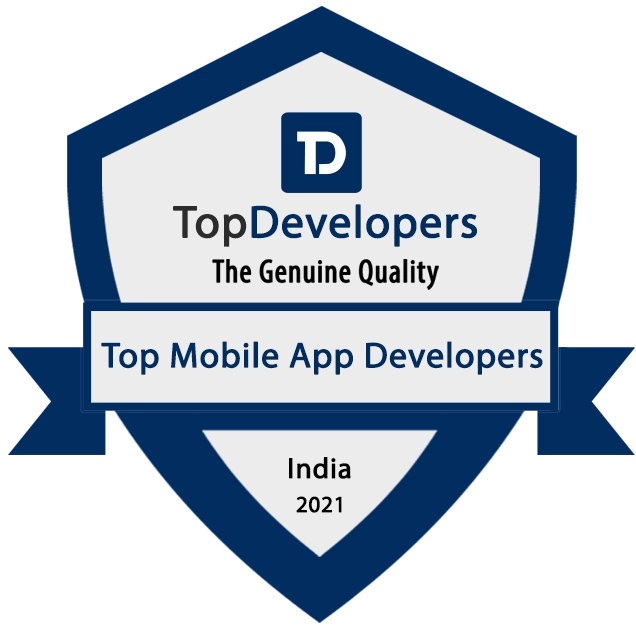The rise of large language models (LLMs), like GPT-4 and other advanced AI systems, has revolutionized the way businesses and industries interact with artificial intelligence. These models have shown impressive capabilities in generating human-like text, performing complex tasks, and understanding natural language. However, managing, deploying, and scaling LLMs in production environments presents its own unique set of challenges. This is where LLMOps—Large Language Model Operations—becomes essential.
LLMOps provides a structured framework for the seamless integration, monitoring, and optimization of LLMs at scale. Similar to MLOps (Machine Learning Operations), which focuses on operationalizing machine learning models, LLMOps is specifically designed to address the complexities of large language models. As organizations increasingly rely on LLMs for automation, customer service, content generation, and more, understanding the importance of LLMOps becomes essential for ensuring smooth and efficient operations.
In this comprehensive guide, we will explore what LLMOps is, how it differs from MLOps, why it’s necessary, and the core components required for its implementation. Additionally, we will dive into the benefits, best practices, and future impact of LLMOps in various industries.
What is LLMOps?
LLMOps, short for Large Language Model Operations, refers to the set of practices, tools, and workflows that ensure the effective deployment, management, and scaling of large language models (LLMs) in real-world environments. Similar to how MLOps (Machine Learning Operations) emerged to address the operational challenges of machine learning models, LLMOps specifically focuses on the complexities and nuances of managing LLMs.
With the rise of generative AI, transformers, and models like GPT-4, the need to handle these sophisticated models in production has grown significantly. LLMOps is not just about running a model on a server; it’s about creating a robust system that can handle vast amounts of data, ensure consistent performance, update models efficiently, and scale usage as needed—all while maintaining the integrity and security of the system.
Start Your Journey with Our Extensive Guide on LLMOps
Schedule a MeetingHow is LLMOps Different from MLOps?
At first glance, LLMOps might sound like a subset of MLOps, but the two have distinct differences that stem from the nature of the models they manage. MLOps is designed for a wide range of machine learning models, from simple regression models to more complex deep learning systems. LLMOps, on the other hand, deals specifically with large-scale language models that operate on massive datasets and can generate human-like text.
Key Differences:
Model Complexity:
LLMs are far more computationally intensive and require specialized hardware and software for training and inference compared to most other machine learning models.
Deployment:
The deployment of LLMs is often more complex, requiring higher computing power and more fine-tuned optimization strategies to ensure the model works efficiently in production environments.
Resource Management:
LLMOps needs to handle the immense resources required to run LLMs, which often involves managing distributed computing environments and ensuring high availability of GPUs or TPUs.
Data Requirements:
Unlike typical ML models, LLMs require significantly larger datasets for training, making data management, labeling, and processing more complex in LLMOps.
Model Updates:
While updating smaller models can be routine in MLOps, updating an LLM involves retraining on large datasets, fine-tuning for specific tasks, and managing the computational overhead.
Why Do We Need LLMOps?
As the adoption of LLMs grows, the need for LLMOps becomes evident. Here are some key reasons why LLMOps is critical:
Scalability:
LLMs are resource-heavy, and without proper orchestration, scaling these models to serve millions of users becomes nearly impossible. LLMOps ensures that the underlying infrastructure can scale with demand.
Efficiency:
Proper LLMOps processes streamline model development, deployment, and monitoring, which reduces downtime and optimizes resource utilization. It ensures that large language models run smoothly and without unnecessary overhead.
Security and Compliance:
LLMOps frameworks often include security protocols that protect data privacy, encryption, and compliance with industry standards such as GDPR.
Cost Optimization:
Managing and optimizing the costs of running large-scale LLMs in production environments is crucial for companies that want to avoid overspending on cloud resources or hardware.
Automation and Monitoring:
LLMOps allows for automated workflows, including model versioning, deployment pipelines, and monitoring for issues like drift, bias, or performance degradation.
How Does LLMOps Work?
LLMOps operates through a combination of infrastructure, software, and workflows designed to manage LLMs at every stage of their lifecycle, from development and training to deployment and monitoring.
Model Development and Training:
Data Pipeline Management: LLMOps integrates data pipelines to collect, clean, and preprocess vast amounts of data for model training. This also includes tools for augmenting and labeling data.
Training Management: LLMOps manages distributed training environments, ensuring that models can be trained at scale across multiple GPUs or TPUs.
Model Deployment:
Inference Optimization: LLMOps includes strategies for optimizing LLMs to run efficiently in production, using techniques like model quantization or distillation to reduce computational load.
Version Control and Rollback: Deployment strategies include managing multiple model versions and enabling rollbacks if the current version fails.
Monitoring and Feedback Loops:
Performance Monitoring: LLMOps continuously monitors the model for any performance issues, including latency, response quality, and resource utilization.
Bias and Drift Detection: It also identifies shifts in the model’s predictions or underlying data, which could indicate bias or drift.
Continuous Training and Feedback: LLMOps incorporates feedback loops where the model is retrained based on real-world performance data to maintain or improve accuracy.
Key Benefits of Integrating LLMOps
Enhanced Model Reliability: With LLMOps, LLMs in production environments are far less likely to fail or produce inaccurate results, as the system is continuously monitored and optimized.
Scalability:
LLMOps platforms are designed to handle the challenges of scaling large language models to meet user demands, ensuring they can operate across distributed systems efficiently.
Cost Efficiency:
LLMOps includes tools for resource management, which helps in optimizing the costs of running large-scale models, whether on-premise or in the cloud.
Faster Time-to-Market:
LLMOps accelerates the deployment and iteration of LLMs, reducing the time it takes for a model to move from development to production.
Improved Security and Compliance:
LLMOps platforms ensure that data handling, model updates, and deployment processes comply with industry regulations and security standards.
The Core Components of LLMOps
To fully implement LLMOps, certain core components are necessary:
Infrastructure Management:
The backbone of LLMOps, infrastructure management handles the distributed computing environments needed for LLM training and inference.
Model Versioning:
Managing multiple versions of LLMs ensures that the most up-to-date and efficient model is always in production, and allows for rollback if necessary.
Data Pipeline Management:
Efficient data management processes, from ingestion to preprocessing, ensure the model is trained on high-quality, relevant data.
Model Monitoring and Logging:
Continuous monitoring of model performance, latency, and error rates allows for the quick identification of any issues.
Automation Tools:
Automation of deployment, version control, and even model retraining is critical for scaling LLMs without increasing the manual workload.
Best Practices for Implementing LLMOps
Ensure Infrastructure Readiness:
Before deploying any LLM, ensure that your infrastructure can handle the resource demands, including computational power, storage, and networking.
Automate Where Possible:
Automation is the key to efficiency in LLMOps. Automate training, deployment pipelines, monitoring, and alerting to free up your team for more complex tasks.
Monitor Performance Metrics:
Continuously monitor important performance metrics like latency, response quality, and resource utilization to ensure your LLM operates efficiently in production.
Bias and Drift Detection:
Set up systems to detect bias in outputs or model drift, which could degrade model performance over time.
Optimize for Cost:
Always look for opportunities to optimize costs, whether it’s through model compression techniques, more efficient inference pipelines, or better resource allocation.
What is an LLMOps Platform?
An LLMOps platform is an integrated environment that provides the necessary tools for managing large language models throughout their lifecycle. These platforms typically offer features for data management, model training, deployment, and monitoring—all in one interface.
Launch Your Full Journey into LLMOps with Our Detailed Guide
Schedule a MeetingKey features of an LLMOps platform include:
Automated Model Deployment:
Simplifies the process of deploying LLMs to production.
Scalability Tools:
Allows the model to scale automatically based on demand.
Monitoring Dashboards:
Real-time dashboards that provide insights into model performance and resource usage.
Model Retraining Pipelines:
Automated systems that continuously retrain models based on real-world performance data.
Use Cases for LLMOps
LLMOps is essential in many industries and applications, including:
Customer Support Bots:
LLMOps ensures that AI-powered customer support bots provide accurate and timely responses by optimizing model performance in real time.
Content Generation:
In industries that require large-scale content production, LLMOps can manage and scale content generation models to meet demand.
Legal Document Processing:
LLMOps helps automate the management of LLMs designed to process legal documents, ensuring they are accurate and up-to-date with the latest regulations.
Financial Services:
In financial institutions, LLMOps helps manage models that generate reports, process transactions, or offer customer support.
Stages of LLMOps
Data Collection and Preprocessing: Data is collected, cleaned, and preprocessed for model training.
Model Training: LLMs are trained on large datasets, often requiring distributed computing environments to handle the computation.
Deployment: Once trained, the model is deployed into production, often through a scalable architecture.
Monitoring and Retraining: Continuous monitoring of the model’s performance allows for timely retraining and updates based on new data.
Future of LLMOps and Industry Impact
The future of LLMOps is poised for significant growth as LLMs continue to play a pivotal role in multiple industries. Advancements in automation, infrastructure management, and model optimization are likely to drive widespread adoption of LLMOps platforms.
Key industry impacts include:
Accelerated AI Adoption: As LLMOps platforms make it easier to manage and deploy LLMs, more businesses will integrate AI-driven solutions into their workflows.
Cost-Effective AI Solutions: Optimizing costs through better resource management and scalable architectures will make AI more accessible to smaller businesses.
Enhanced Collaboration Between AI and Humans: The automation provided by LLMOps will free up human experts to focus on higher-level problem-solving and decision-making.
Conclusion
LLMOps is a critical framework for managing large language models in production environments. By providing the necessary infrastructure, tools, and workflows, LLMOps ensures that LLMs can operate efficiently, securely, and at scale. As AI continues to evolve, LLMOps will play an essential role in shaping the future of intelligent automation across industries.









